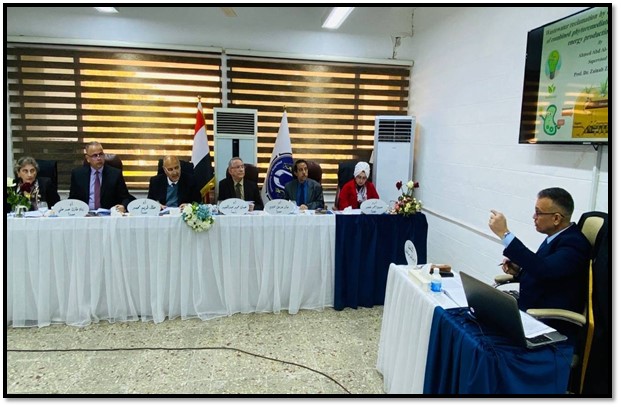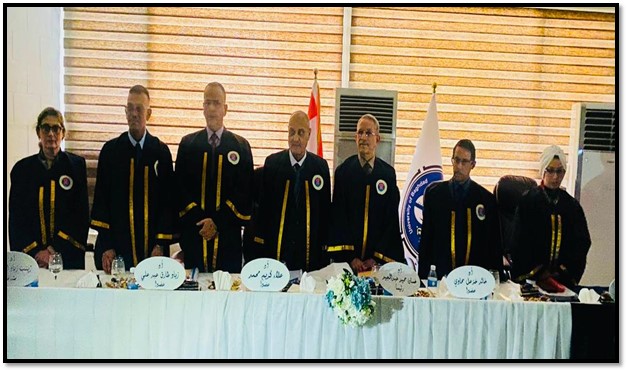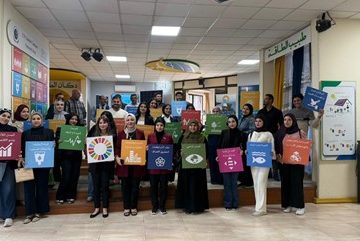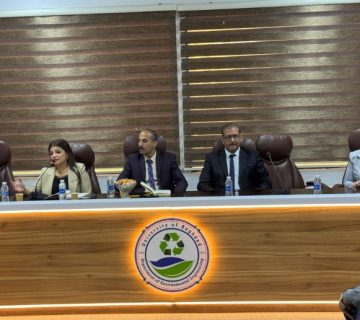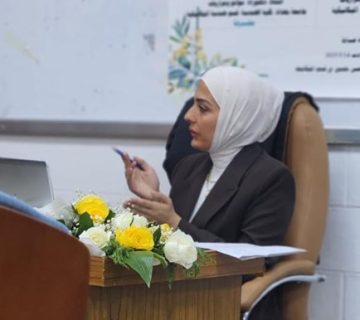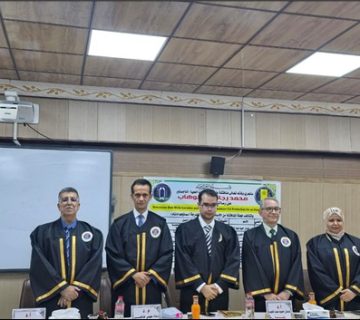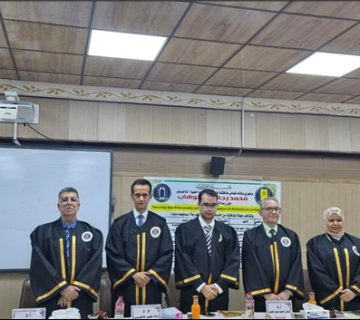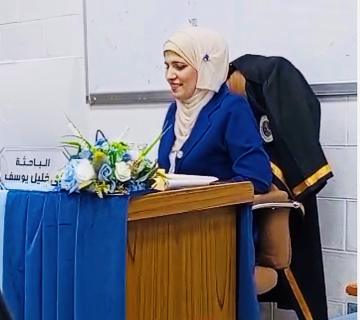The College of Engineering at the University of Baghdad held the public defense of PhD student Ahmad Abdul Abbas Abdul Sultan Saleh for his dissertation titled:
“The Sustainable Approach for Treatment of Leather Tannery Wastewater in an Integrated System of Constructed Wetland and Microbial Fuel Cell.”
This event took place on Tuesday, December 31, 2024, in the discussion hall of the Department of Environmental Engineering, under the supervision of Prof. Dr. Zainab Ziad Ismail. The examination committee consisted of Prof. Dr. Ghassan Hamid Abdul Majid, Prof. Dr. Alaa Kareem Mohammed, Prof. Dr. Khaled Khazal Hamadi, Prof. Dr. Ziad Tareq Abdul, and Assistant Prof. Dr. Haneen Ahmed Khader.
The dissertation involves the study and evaluation of the performance of 14 integrated systems combining constructed wetlands and microbial fuel cells to treat real samples of industrial wastewater discharged from leather tanning factories, while also generating clean energy. Wastewater from leather tanning factories is characterized by high concentrations of organic matter, salts, chromium, and arsenic, and there are no specialized units for its treatment. As a result, it is directly released into the ecosystem, posing a significant risk to human life and environmental safety. Therefore, treating this contaminated water before it is discharged into the surrounding environment, especially natural water sources, is essential for protecting the environment from pollution and ensuring human safety.
The work was completed using batch and continuous flow systems. The batch system involved conducting three experimental groups, each consisting of five systems. The first group aimed to evaluate the potential use of recycled polypropylene granules as a new filling material compared to traditional gravel, as well as to assess the effect of anode composition on microbial fuel cell performance. The second group aimed to evaluate the impact of different types of vegetation and whether plants contribute to pollutant removal. The third group consisted of three systems to determine the potential role of adsorption mechanisms by soil, gravel, and polypropylene granules in removing pollutants. Additionally, a continuous-flow system was established based on the results and observations obtained from the batch systems.
The results showed that the organic content removal efficiency ranged from 98.8% to 99.8%. Regarding electrical power, significant variations were observed, with the highest electrical power reaching 10,502.8 mW/m³ for systems using irregular granular graphite as a support material beneath the cylindrical anode. The results also indicated a significant reduction in the level of total dissolved salts by 60.8%. Stability was achieved in the continuous-flow system within ten days, with a maximum organic matter removal efficiency of 98.7% and 100% removal of toxic pollutants such as chromium and arsenic. The highest electrical power was 1,614.5 mW/m³. Phytotoxicity tests confirmed the suitability of the treated water for irrigation, with 100% seed germination rates for barley and wheat plants.
Recommendations for further work:
This study can be extended in future to investigate the followings:
- Examine the performance of different geometric design configurations, other types of electrode material and operating conditions for CW- MFC fueled with LTW.
- Evaluate the efficiency of CW-MFC for reclamation of different types of industrial wastewater as the substrate and the sole source of carbon.
- Investigate the validity of using other waste materials rather than polypropylene waste material as filling material and examine its performance against the conventional gravel filling.
- Examine other available types of vegetation, and study their effect for TDS elimination versus the Canna indica
After the scientific discussion by the committee members, listening to the researcher’s defense, and evaluating the thesis, the researcher was awarded a PhD in Environmental Engineering.

